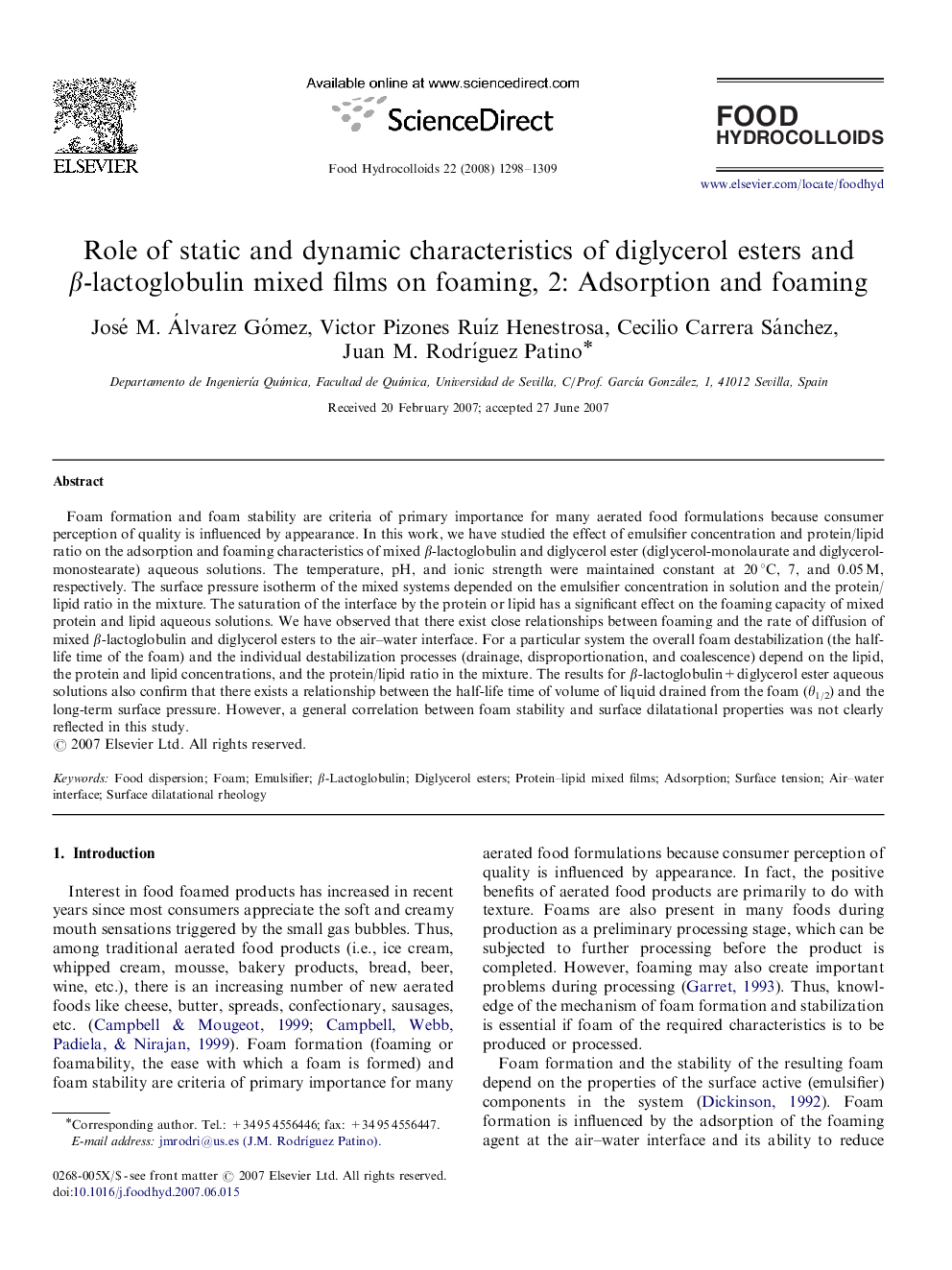| Article ID | Journal | Published Year | Pages | File Type |
|---|---|---|---|---|
| 605106 | Food Hydrocolloids | 2008 | 12 Pages |
Foam formation and foam stability are criteria of primary importance for many aerated food formulations because consumer perception of quality is influenced by appearance. In this work, we have studied the effect of emulsifier concentration and protein/lipid ratio on the adsorption and foaming characteristics of mixed β-lactoglobulin and diglycerol ester (diglycerol-monolaurate and diglycerol-monostearate) aqueous solutions. The temperature, pH, and ionic strength were maintained constant at 20 °C, 7, and 0.05 M, respectively. The surface pressure isotherm of the mixed systems depended on the emulsifier concentration in solution and the protein/lipid ratio in the mixture. The saturation of the interface by the protein or lipid has a significant effect on the foaming capacity of mixed protein and lipid aqueous solutions. We have observed that there exist close relationships between foaming and the rate of diffusion of mixed β-lactoglobulin and diglycerol esters to the air–water interface. For a particular system the overall foam destabilization (the half-life time of the foam) and the individual destabilization processes (drainage, disproportionation, and coalescence) depend on the lipid, the protein and lipid concentrations, and the protein/lipid ratio in the mixture. The results for β-lactoglobulin+diglycerol ester aqueous solutions also confirm that there exists a relationship between the half-life time of volume of liquid drained from the foam (θ1/2) and the long-term surface pressure. However, a general correlation between foam stability and surface dilatational properties was not clearly reflected in this study.
